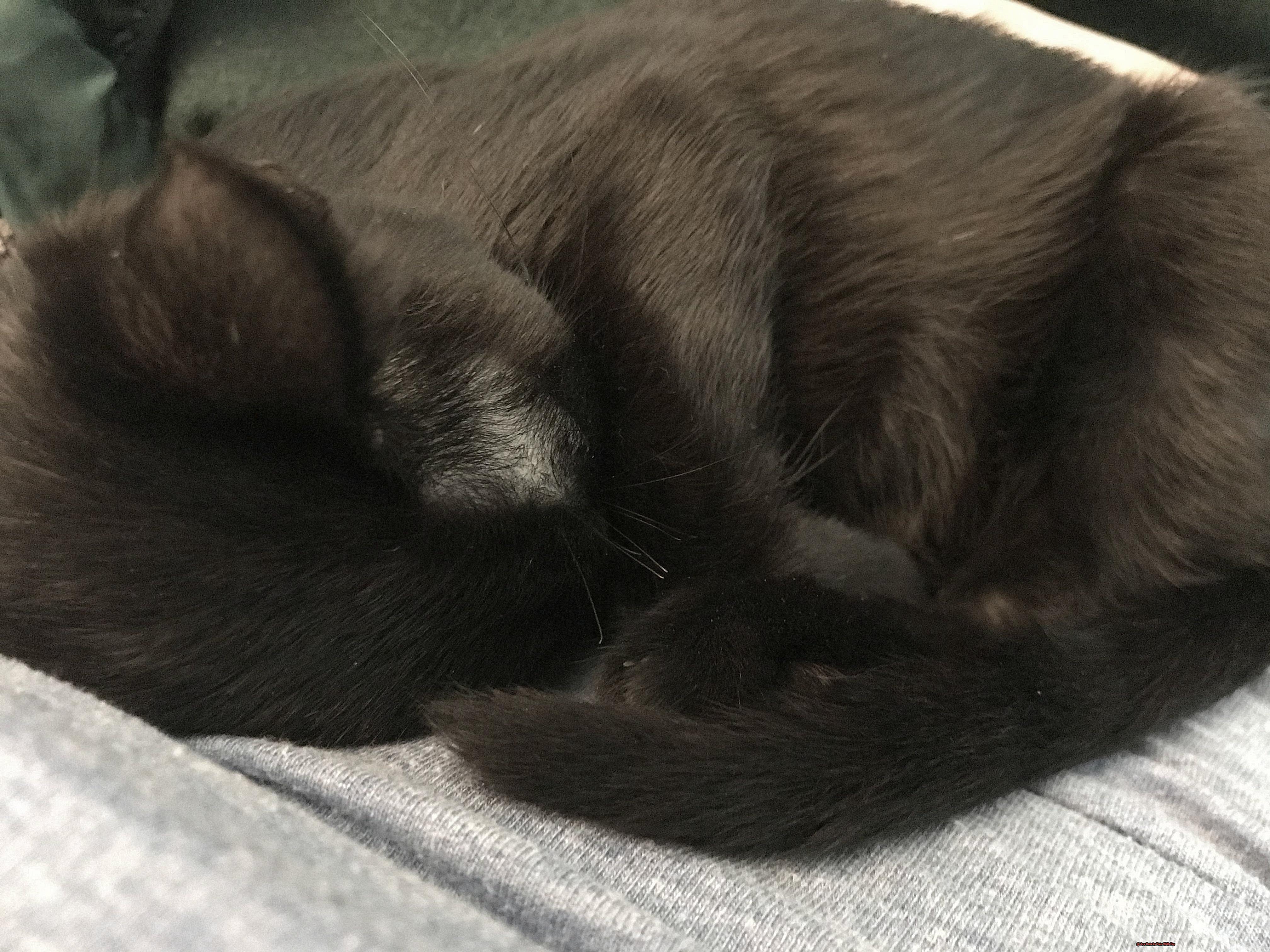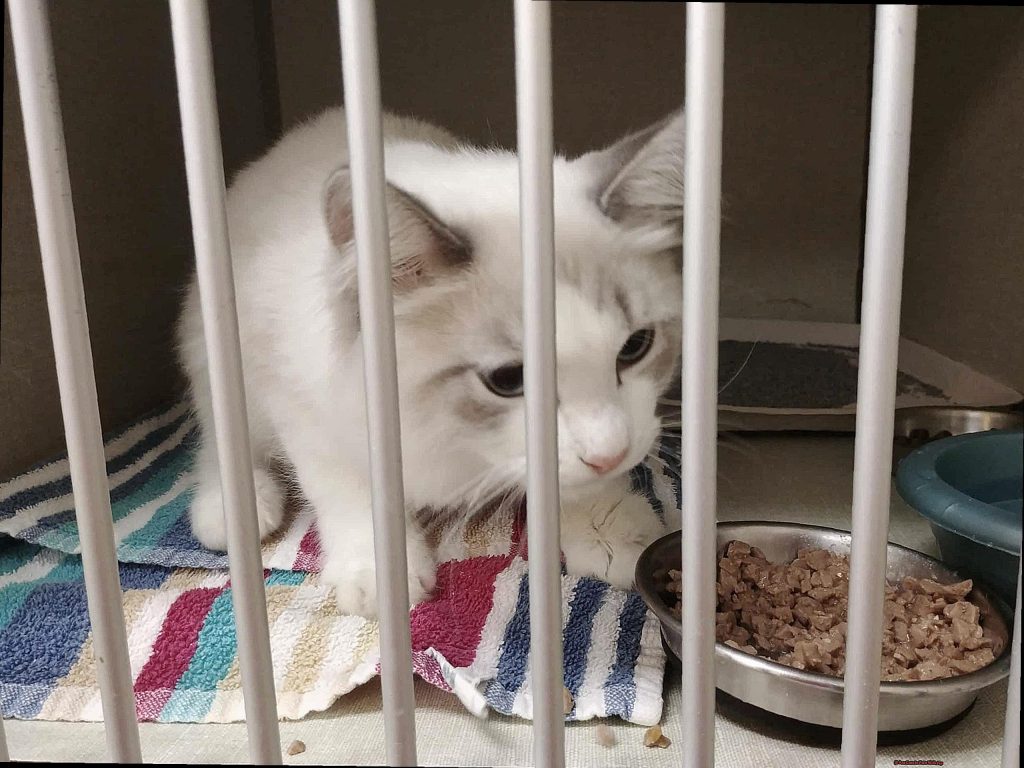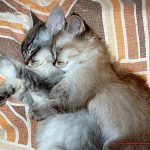Ever heard of Feline Infectious Peritonitis, or FIP for short? It’s a mysterious and potentially deadly disease that has been making waves in the world of feline health.
As devoted cat parents, we all want to ensure our beloved furballs are happy and healthy, but unfortunately, FIP is a harsh reality that many of us may have to face. In this blog post, we’ll take a deep dive into the ins and outs of FIP – what it is, how it affects cats, and what we can do to prevent and treat it.
So, grab your favorite feline companion and let’s embark on this journey together.
Are Cats In Pain With Fip?
Contents
Feline Infectious Peritonitis (FIP) is a viral disease that can be devastating for our feline friends. As cat owners, we want to do everything we can to keep our furry companions healthy and happy. However, when it comes to FIP, one of the most common questions is whether cats with this disease experience pain. The answer is not a simple yes or no, as it can vary depending on the stage and severity of the disease. As an expert on FIP, let me explain the potential for cats with this disease to experience pain and how it can be managed.

Understanding FIP and its Symptoms
FIP is caused by a coronavirus that mutates and attacks the cat’s immune system, making it fatal in some cases. The symptoms of FIP can vary, but they typically include fever, lethargy, weight loss, and loss of appetite. These symptoms can be difficult to detect in cats, as they are masters at hiding their pain. However, if you notice any changes in your cat’s behavior or habits, it’s essential to consult your veterinarian.
The Painful Reality of FIP
Unfortunately, cats with FIP do experience pain. The virus attacks and damages their internal organs, leading to inflammation and discomfort. In severe cases, FIP can also cause nerve damage, resulting in neuropathic pain – a burning or tingling sensation that can be excruciating for cats.
Cats may also experience muscle and joint pain due to the inflammation in their bodies. This can make it challenging for them to move and perform everyday activities such as grooming or using the litter box. Additionally, secondary infections caused by FIP can further contribute to their overall pain levels.
Managing Pain in Cats with FIP
Pain management for cats with FIP can be challenging because many pain medications are not safe for cats and can cause further damage to their already compromised organs. However, there are some options available, such as non-steroidal anti-inflammatory drugs (NSAIDs) and opioids, which can help alleviate pain in cats with FIP.
It’s crucial for cat owners to work closely with their veterinarian to find the best pain management plan for their furry friend. This may involve a combination of medication, supportive care, and adjustments to the cat’s environment to make them more comfortable.
The Causes and Progression of FIP in Cats
As a cat owner, it can be terrifying to hear the words “Feline Infectious Peritonitis” or FIP. This viral disease is known for its devastating effects on our feline friends, and unfortunately, there is still much we don’t know about it. However, as an expert on the topic, I’m here to provide you with a comprehensive understanding of FIP, including its causes and progression in cats.
The Cause: A Common Virus Gone Wrong
FIP is caused by a coronavirus, which is a common virus in cats. You may have heard of the coronavirus before, but don’t worry – the one that causes FIP is different from the one that has been causing global concern lately. While the coronavirus that causes FIP is common in cats, not all cats who are infected will develop the disease. Here’s where it gets tricky – the virus can mutate, leading to the development of FIP.
Transmission: From Cat to Cat
The virus is primarily transmitted through contact with infected bodily fluids, such as saliva or feces. This means that if your cat comes into contact with an infected cat’s bodily fluids, they could potentially contract the virus. Additionally, a mother cat can pass the virus onto her kittens during pregnancy or through nursing.
At-Risk Cats: The Young and Immunocompromised
While any cat can technically contract FIP, some are more at risk than others. Cats with weakened immune systems, such as kittens or older cats, are more susceptible to developing the disease. In fact, the virus primarily affects young cats under the age of two, but it can also occur in older cats.
Forms of FIP: Wet and Dry
There are two forms of FIP – wet and dry. The wet form affects the cat’s abdomen, while the dry form affects other organs such as the eyes, brain, and kidneys. Symptoms can vary depending on the form of the disease and which organs are affected.
Symptoms to Look Out For
As with any disease, it’s important to be aware of the symptoms of FIP. Some common signs include weight loss, fever, diarrhea, lack of appetite, and difficulty breathing. As the disease progresses, cats may also experience jaundice, neurological issues, and fluid buildup in the abdomen or chest.
Common Symptoms of FIP in Cats
Whether you have a new kitten or an older feline friend, it’s important to be aware of the signs of FIP so you can seek treatment as soon as possible. So let’s dive in and explore the key indicators of this devastating disease.
Fever:
One of the most common symptoms of FIP in cats is fever. This may seem like a vague symptom, but it’s important to take note if your cat has a consistently high body temperature. A normal cat body temperature ranges from 100.5-102.5°F, so anything above that could be a sign of infection.
Weight Loss:
Another red flag for FIP is weight loss. Cats with FIP often lose weight despite maintaining their usual appetite. This is because the virus attacks their immune system, making it difficult for them to absorb nutrients from their food.
Loss of Appetite:
Speaking of appetite, cats with FIP may also experience a decrease in their appetite. This can be due to the virus affecting their sense of smell or causing nausea and abdominal pain.
Lethargy:
Cats are known for their playful and energetic nature, so if you notice your feline friend becoming lethargic or less active than usual, it could be a sign of FIP. The virus can cause weakness and fatigue in cats, making them less interested in their usual activities.
Difficulty Breathing:
If your cat is struggling to catch its breath or seems to be breathing heavily, it could be a symptom of FIP. This is caused by fluid buildup in the chest, which puts pressure on the lungs and makes it difficult for them to function properly.
Distended Abdomen:
“FIP belly” is a term that you may have heard in the cat community. This refers to a distended or bloated abdomen caused by fluid accumulation. This is more commonly seen in the wet form of FIP, but can also occur in the dry form.
The Role of Inflammation and Neuropathic Pain in FIP
Feline Infectious Peritonitis, or FIP, is a viral disease that affects cats and is caused by a coronavirus. It is a devastating diagnosis for any cat owner, as it is usually fatal and has no specific treatment. As an expert on the topic, I want to shed light on an important aspect of this disease – the role of inflammation and neuropathic pain.
Inflammation is the body’s natural response to infection, injury, or foreign substances. In cats with FIP, this inflammation can occur in various organs such as the liver, kidneys, and intestines. But did you know that it can also affect the nervous system? This can lead to neuropathic pain – a type of pain caused by damage or dysfunction in the nerves.
Cats with FIP may experience pain in different parts of their body, depending on where the inflammation and nerve damage are occurring. This can include joint pain, abdominal pain, and muscle pain. The severity of pain can vary depending on the stage of the disease and the individual cat’s tolerance for pain.
Unfortunately, due to the nature of FIP and its effects on the nervous system, cats may not show obvious signs of pain. As a result, it can be challenging for pet owners to determine if their cat is suffering. This highlights the importance of paying attention to any changes in your cat’s behavior, such as decreased mobility, loss of appetite, or excessive grooming in certain areas.
Inflammation and neuropathic pain not only cause discomfort for cats with FIP but can also lead to other complications such as muscle wasting and weakness due to decreased activity levels and difficulty eating. That’s why managing these symptoms is crucial in providing comfort and improving the quality of life for cats with FIP.
But how do we manage inflammation and neuropathic pain in cats with FIP? It requires a tailored treatment plan from a veterinarian familiar with the disease and its symptoms. This may include anti-inflammatory medications, pain management strategies, and supportive care to help alleviate discomfort.
How to Recognize Signs of Pain in Cats with FIP
From regular check-ups to providing them with a balanced diet, we do everything in our power to ensure their well-being. However, there is one illness that can be challenging to detect and treat in cats – FIP or feline infectious peritonitis.
FIP is a viral disease caused by a coronavirus that affects cats. It is fatal, with no known cure, and it can be challenging to diagnose as its symptoms are similar to other illnesses. But did you know that one of the most crucial factors in managing FIP and improving your cat’s chances of survival is early detection and treatment of pain?
Yes, you read that right – cats with FIP do experience pain and discomfort. The virus attacks multiple organs in their body, causing inflammation and damage, which can be excruciating for them. As their caregivers, it’s our responsibility to recognize the signs of pain in our cats and seek appropriate medical treatment for them.
So, what are the signs of pain in cats with FIP? First and foremost, it’s essential to pay attention to any changes in your cat’s behavior. Is your once active and playful cat now spending most of their time hiding or sleeping? Are they lashing out when touched or handled? These could be signs of pain.
Other common signs include changes in appetite, weight loss, aggression, vocalization, changes in grooming habits, and changes in posture or movement. Cats with FIP may also show specific signs of pain depending on the affected area of their body. For example, if they have abdominal discomfort due to fluid buildup, they may have difficulty breathing or show discomfort when touched in that area.
It’s crucial to note that these signs may also be indicative of other health issues, so it’s essential to consult a veterinarian for proper diagnosis. Additionally, cats are known for hiding their pain, so it’s crucial to be observant and look out for any changes in their routine or habits.
Early detection and treatment of pain in cats with FIP can greatly improve their chances of survival. As soon as you notice any signs of discomfort or behavior changes in your cat, it’s essential to seek veterinary care. A veterinarian will be able to perform tests to confirm the diagnosis and provide appropriate pain management and supportive care for your cat.
In addition to medical treatment, there are also steps that you can take at home to help manage your cat’s pain. This includes providing a comfortable and quiet environment for them to rest and limiting their physical activity. Applying heat therapy to their abdomen can also help ease discomfort and reduce inflammation.
Seeking Proper Treatment for Cats with FIP-Related Pain
As cat owners, we do everything we can to keep our furry companions healthy and happy. But when it comes to Feline Infectious Peritonitis (FIP), it can be a tricky illness to spot and treat. This viral disease caused by a coronavirus can wreak havoc on a cat’s organs, leading to excruciating pain and even death. That’s why seeking proper treatment for cats with FIP-related pain is crucial for their well-being and comfort.
So, what are the signs of pain in cats with FIP? Look out for decreased appetite, lethargy, reluctance to move or play, and vocalization. These are all red flags that your cat may be in discomfort and needs immediate attention. Don’t wait, consult a veterinarian who is knowledgeable about FIP and its symptoms.
Your veterinarian will provide a proper diagnosis and recommend treatment options, including pain management. There are various options available, such as non-steroidal anti-inflammatory drugs (NSAIDs), opioids, and glucocorticoids. Each has its own benefits and risks, so it’s important to assess your cat’s individual condition before starting any medication.
But did you know there are also alternative treatments that can help alleviate pain in cats with FIP? These include acupuncture, physical therapy, and herbal remedies. While they may not be the first choice for some, they can provide relief for cats who may not respond well to traditional medication. However, always consult with your veterinarian before trying any alternative treatments to ensure they are safe and suitable for your cat.
It’s essential to closely monitor your cat’s response to treatment and report any changes or concerns to your veterinarian. This will help ensure that the treatment plan is effective and can be adjusted if needed. In some cases, cats with FIP may require long-term pain management as the disease progresses. In these situations, working closely with your veterinarian to find the best course of treatment is crucial for providing the most comfort for your cat.
In addition to proper medical care, it’s also important to provide a comfortable and stress-free environment for your FIP-affected cat. This includes a warm and cozy resting place, minimizing loud noises and disruptions, and ensuring their nutritional needs are met.
Supporting Your Cat’s Comfort and Well-Being During FIP Treatment
This viral illness is caused by a coronavirus and is fatal with no known cure. However, while FIP cannot be cured, it can be managed to improve your cat’s comfort and well-being during treatment. As an expert on the topic, I’m here to share with you some valuable insights on how you can support your cat’s comfort and well-being during FIP treatment.
Creating a comfortable environment for your cat is crucial in helping them cope with the effects of FIP. Cats with this disease may already feel weak and tired, so it’s essential to make their living space as cozy and stress-free as possible. This includes providing soft and warm bedding, keeping the area quiet and peaceful, and minimizing any changes or disruptions to their routine.
Proper nutrition is another key aspect of supporting your cat’s well-being during FIP treatment. Cats with this disease may have a reduced appetite or difficulty eating due to mouth ulcers or nausea. It’s essential to work closely with your veterinarian to find a suitable diet for your cat that provides them with the necessary nutrition and hydration they need.
Pain management is also crucial in supporting your cat’s comfort during FIP treatment. Look out for signs of pain such as fever, loss of appetite, lethargy, and difficulty breathing. If you notice any of these symptoms, inform your veterinarian immediately. They may prescribe pain medication or anti-inflammatories to help alleviate any discomfort your cat may be experiencing.
In addition to medical care, emotional support is also crucial in helping your cat through this difficult time. Cats are sensitive creatures and may pick up on their owner’s stress and emotions. It’s vital to stay calm and positive around your cat, which can help reduce their stress levels and improve their emotional state.
It’s essential to work closely with your veterinarian to find the best treatment plan for your cat. They may recommend alternative treatments like acupuncture and herbal remedies in addition to traditional medical care. It’s crucial to monitor your cat’s response to treatment and communicate regularly with your veterinarian.
Conclusion
In conclusion, Feline Infectious Peritonitis (FIP) is a heartbreaking disease that can have devastating consequences for our feline companions. As responsible cat owners, it is our duty to educate ourselves about this illness and its potential impact on our cats.
From understanding the causes and progression of FIP to recognizing the signs of pain in affected cats, we must be informed and proactive in providing the best care for our furry friends. While there is currently no known cure for FIP, there are ways to manage the symptoms and improve your cat’s comfort during treatment.
This includes ensuring proper nutrition, creating a comfortable and stress-free environment, and working closely with your veterinarian to explore pain management options. It is also important to provide emotional support for your cat during this difficult time by remaining calm and positive.
Let us come together as a community of cat lovers and caregivers to raise awareness about FIP and support each other through this journey. Our beloved cats deserve all the love, care, and attention we can give them, especially when facing such a challenging illness.






